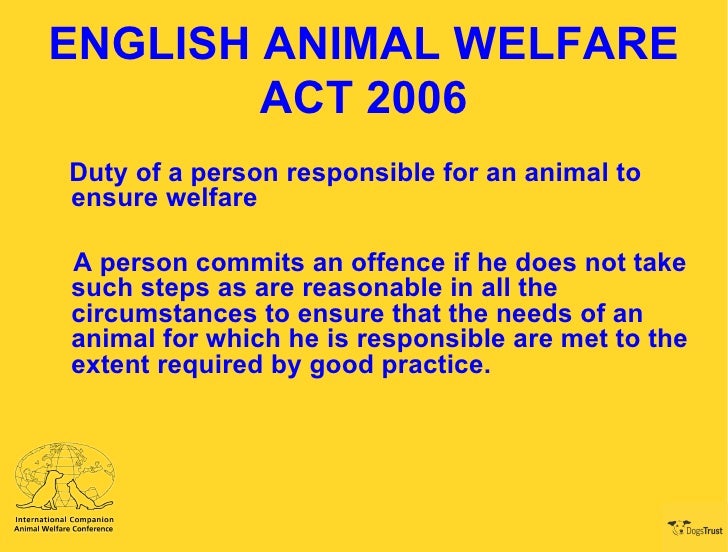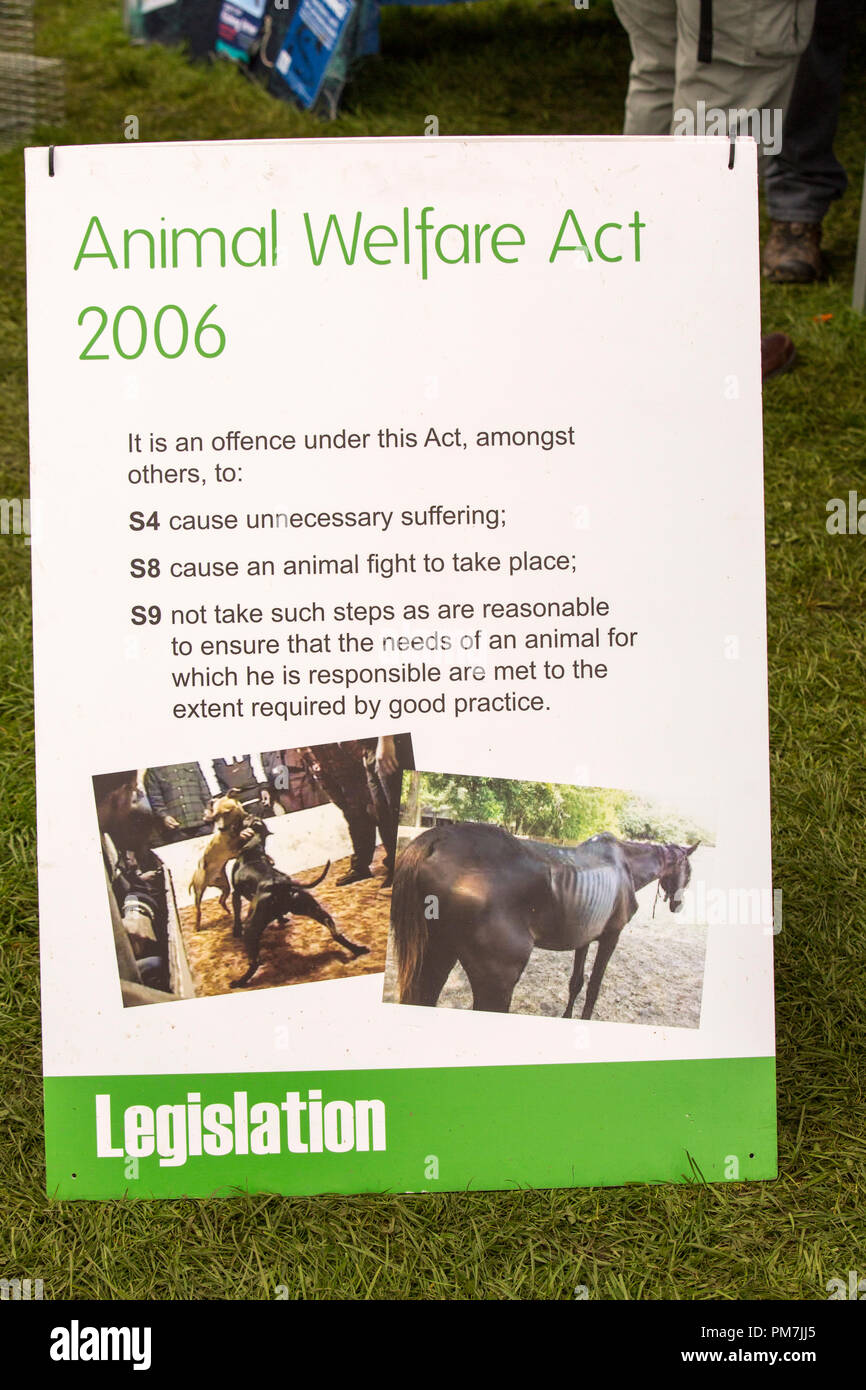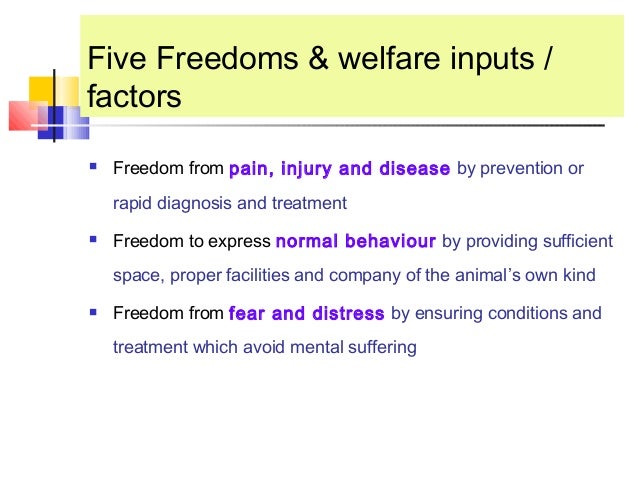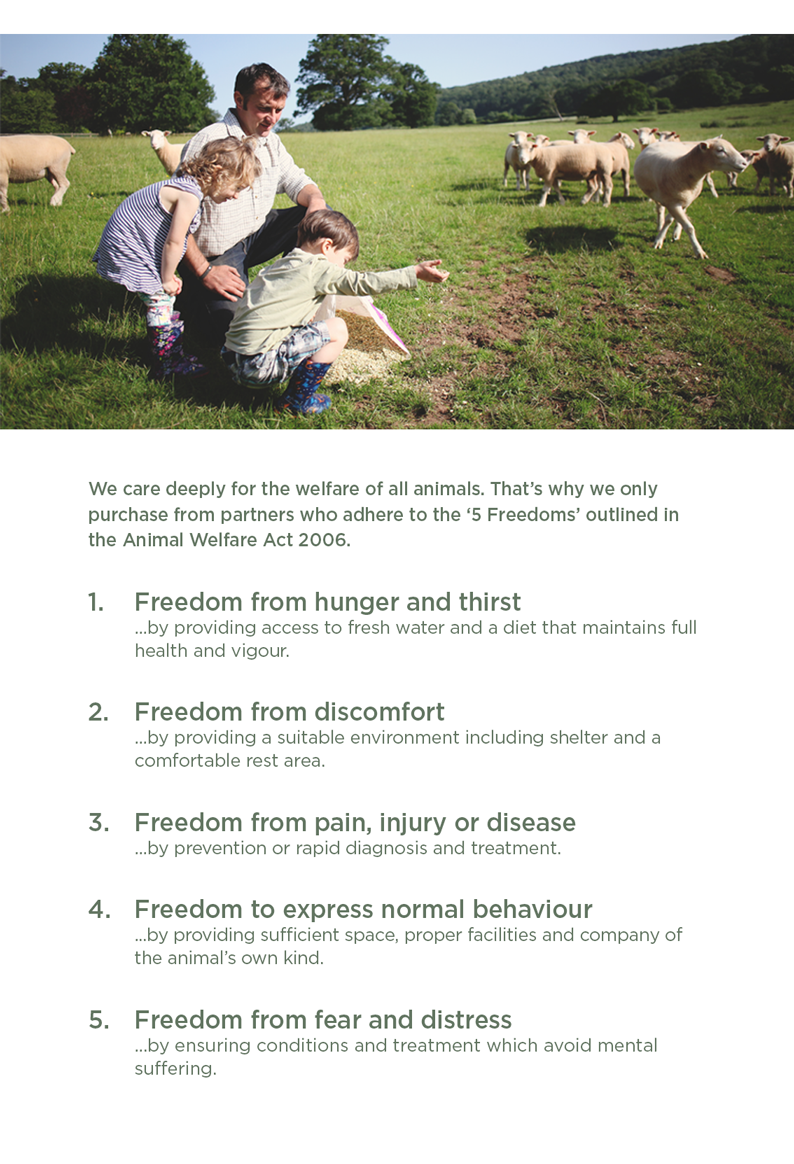The Animal Welfare Act 2006 Five Freedoms
Over the years, other welfare. Although originally designed for farm animals, the five freedoms have been adapted for companion and working animals, and since 1965 have been used by international organisations such as the world organisation for animal health (oie), the rspca and the american society for the prevention of cruelty to animals.
(5) before making regulations under subsection (4), the appropriate national authority shall consult such persons appearing to the authority to represent any.
The animal welfare act 2006 five freedoms. Freedom from pain, injury or disease: They were developed in response to a 1965 uk government report on livestock husbandry, and were formalised in 1979 press statement by the uk farm animal welfare council. (1) a person commits an offence if he does not take such steps as are reasonable in all the circumstances to ensure that the needs of an animal for which he.
The 2006 act has introduced an important and new concept for pet owners and those responsible for domestic animals, e.g. Even though the uk believes it is the bastion of animal loving and successive governments have boasted that they are committed to improving animal welfare standards, it took 96 years for us to update our laws and we. Freedom to express normal behaviour:
Prior to the animal welfare act, animal welfare law was largely reactive and action could only be taken once an animal had suffered unnecessarily. The five freedoms of animal welfare present a standard of care that is followed across the globe. Its wide adoption during the last two decades may be attributed to four key factors, namely that it:
The five welfare needs of companion animals are detailed in the animal welfare act 2006. Although there are nominally five freedoms (the ‘five freedoms’), in actual fact the five freedoms denote nine conditions (hunger, thirst, discomfort, pain, injury , disease, expression The animal welfare act 2006 places a legal duty of care on their owners or keepers to provide for their animals’ welfare needs including the five welfare needs below.
The animal is free from hunger, thirst and malnutrition, because it has ready access to drinking water and a suitable diet. Included in the uk government’s animal welfare act 2006, they state that every living being deserves the right to humane treatment. In 1965, an inquiry into the welfare of farm animals was conducted in the uk.
The five freedoms have been adopted by professional groups including veterinarians, and organisations including. (2) specified areas of welfare concern in terms of particular negative experiences (thirst, hunger, fear, distress, discomfort, pain) and states. The defra codes of practice support the animal welfare act and give owners and keepers more information on how to meet their requirements.
Owners and keepers have a duty of care to their animals and must make sure they meet their needs: The five freedoms were constructed with farm animals in mind and the five needs were constructed with pets in mind. For example, an animal may need to feel hungry before it will eat.
(1) scoped the wider dimensions of animal welfare, including subjective experiences, health status and behaviour; The animal welfare act 2006 came into force on 6 april 2007 and replaced the extremely outdated protection of animals act 1911. N accordance with the 'five freedoms' principle, an animal's welfare is ensured when the following five conditions are met (fawc, 1992;
The five freedoms are set out in the animal welfare act of 2006 and apply to all animals including rabbits. Freedom from fear and distress: Currently in the uk, dog grooming is not regulated, which leads to varying standards and practices in grooming.
The phrase was commandeered by the brambell committee report on the welfare of farm animals in intensive systems to summarise their conclusion that farm animals in confinement should be allowed sufficient space to permit the following five minimal behaviours or activities, namely to stand up, lie down, turn round, stretch their limbs and groom all parts of. Breeders, those who have working animals or farm animals in england and wales. The five freedoms outline five aspects of animal welfare under human control.
By providing sufficient space, proper facilities and company of the animal’s own kind. At major groom you can be assured that the standards are high and the practices are correct and always guided by the animal welfare act of 2006. By ensuring conditions and treatment which avoid mental suffering.
By prevention through rapid diagnosis and treatment. The five freedoms of animal welfare. We work strictly to the animal welfare act of 2006.
1 nutrition, 2 physical envi. The animal welfare act 2006 (the 2006 act) is the principal law relating to animal welfare. The five freedoms are considered aspirational, as they cannot always be achieved and maintained at all times.
Four of the freedoms and needs are similar but the one is.
5 Freedoms for Animals Poster Classroom Posters Pinterest

The Five Animal Welfare Needs (The Animal Welfare Act 2006

Petition · Demand for a stricter implementation of Animal

Animal Welfare Act Five Freedoms ANIMALQU
"Five Freedoms" of Pets Carolina Mountain Dog

The 5 Freedoms Major Groom Dog Boutique

Feeding and Advice ForFarmers UK

Accentuating the Positive Duty of Care Legislation Mike

39+ Animal Welfare Act 2006 Logo Omnivorvora

Animal Welfare Act Five Freedoms ANIMALQU

Accentuating the Positive Duty of Care Legislation Mike
Accentuating the Positive Duty of Care Legislation Mike
Animal Welfare in mega dairies
Animal Welfare Act 2006 New Life Parrot Rescue





Post a Comment for "The Animal Welfare Act 2006 Five Freedoms"